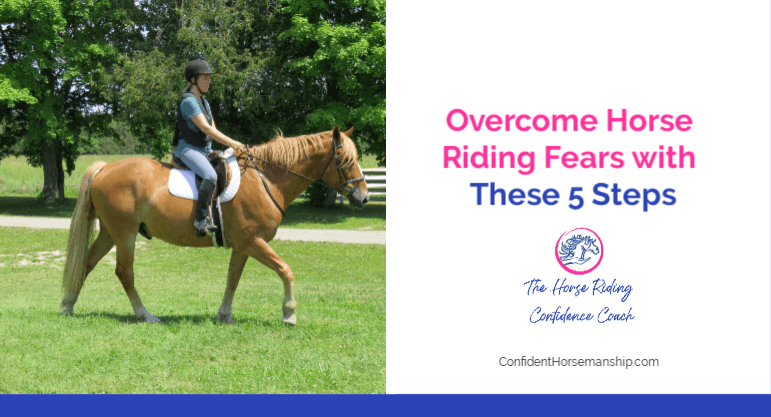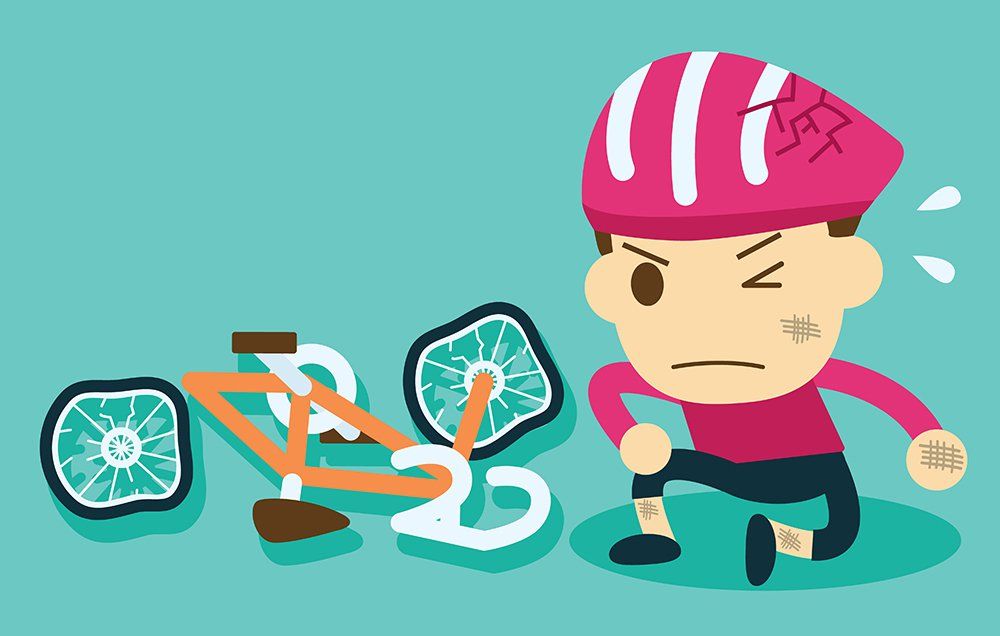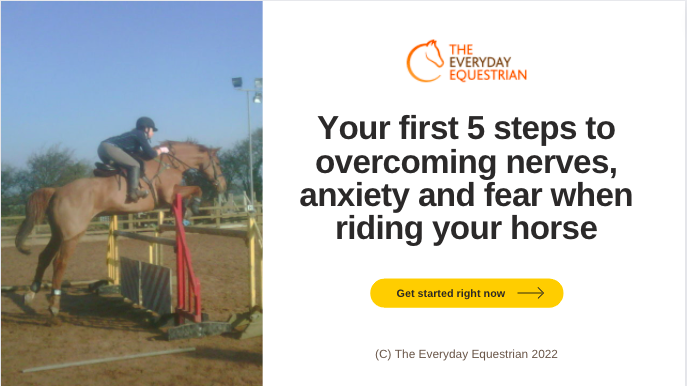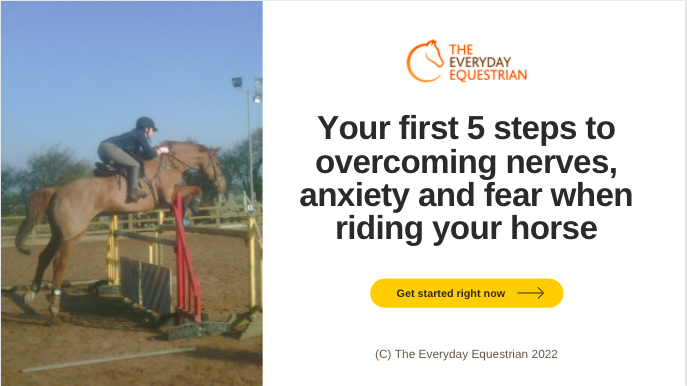If you’re a nervous rider, the thought of getting on a horse can send shivers down your spine. But fear not, because there are techniques that can help you overcome your fear and enjoy the thrill of horseback riding. Whether it’s deep breathing exercises, visualization techniques, or building a strong bond with your horse, this article will provide you with practical tips and strategies to conquer your fear and become a confident rider. So saddle up and get ready to ride with confidence!
Understanding Fear in Horseback Riding
Fear is a common emotion that many riders experience when it comes to horseback riding. Understanding the causes of fear can help us address and overcome it to have a more enjoyable and confident riding experience.
Causes of fear in horseback riding
Fear in horseback riding can arise from various factors. One common cause is the fear of falling off the horse and getting injured. This fear is natural, as riding is an activity that involves balancing on a living, moving creature. The size and power of horses can also contribute to fear, especially for those who are new to riding or have had negative experiences in the past.
Another cause of fear is the lack of control. Horses are independent animals, and their behaviors can sometimes be unpredictable. This lack of control can make riders feel vulnerable and anxious. Past traumatic experiences, such as accidents or falls, can also contribute to fear and anxiety in horseback riding.
Common fears experienced by riders
Different riders may have different fears when it comes to horseback riding. Some common fears include:
- Fear of falling off the horse
- Fear of losing control and being unable to steer or stop the horse
- Fear of being kicked or bitten by the horse
- Fear of riding at high speeds or jumping over obstacles
- Fear of riding in open spaces or crowded areas
These fears can vary in intensity and may affect riders of all skill levels.
Effects of fear on riding performance
Fear can have a significant impact on a rider’s performance. When fear takes hold, it can cause tension in the body, leading to poor balance and posture. This can affect the rider’s ability to communicate effectively with the horse and can hinder their overall riding skills.
Fear can also impair decision-making and increase anxiety while riding. Riders who are overwhelmed by fear may have difficulty focusing on the task at hand, leading to mistakes or accidents. Fear can also cause riders to become hesitant and lack confidence, which can hinder their progress and enjoyment in horseback riding.
The importance of overcoming fear
Overcoming fear is crucial for riders who want to have a fulfilling and enjoyable experience. By addressing and conquering their fears, riders can develop a deeper connection and trust with their horses. Overcoming fear also allows riders to regain a sense of control and confidence in their riding abilities.
When fear is no longer a dominant factor, riders can fully engage in the present moment and communicate effectively with their horses. This opens the door to further growth and improvement in their riding skills. In addition, overcoming fear can enhance the overall enjoyment and satisfaction gained from horseback riding.
Building Trust and Confidence
Building trust and confidence is essential for overcoming fear in horseback riding. By developing a strong bond with your horse, gaining confidence through proper horse handling, establishing clear communication, and working with a supportive instructor or trainer, you can build a foundation of trust and confidence that will help you overcome your fears.
Developing a strong bond with your horse
Building a strong bond with your horse is crucial for developing trust and confidence. Spend time with your horse outside of riding, grooming, and caring for them. This will help establish a connection and familiarity between you and your horse. Engage in activities such as hand grazing or simply spending time in their presence to build trust and strengthen your relationship.
Gaining confidence through proper horse handling
Proper horse handling is essential for building confidence. Learn about horse behavior, body language, and how to handle them safely. Understanding your horse’s needs and how to meet them will help you feel more in control. Practice leading, grooming, and tacking up your horse to become more comfortable and confident in your interactions with them.
Establishing clear communication
Clear communication is key in overcoming fear in horseback riding. Develop a consistent and clear language of cues with your horse, using your seat, legs, and hands effectively. This will help you feel more in control and foster a sense of trust between you and your horse. Practice your communication skills through various exercises and patterns to build confidence in your ability to guide and direct your horse.
Working with a supportive instructor or trainer
Having a supportive instructor or trainer can make a significant difference in overcoming fear. Find someone who understands your fears and is patient and empathetic. A good instructor will provide guidance, encouragement, and support tailored to your individual needs. They can help you build confidence through progressive exercises, gradually challenging you to overcome your fears in a safe and controlled environment.

Visualization Techniques
Visualization techniques can be powerful tools for overcoming fear in horseback riding. By harnessing the power of positive visualization, creating mental imagery for successful riding, using guided meditation, and visualizing worst-case scenarios and overcoming them, riders can train their minds to overcome fear and enhance their riding experience.
The power of positive visualization
Positive visualization involves mentally rehearsing successful riding scenarios. Close your eyes and imagine yourself confidently riding, mastering various skills, and enjoying the experience. Visualize yourself overcoming challenges and achieving your goals. Emphasize positive emotions and sensations during this visualization process to reinforce a positive association with riding.
Creating mental imagery for successful riding
Mental imagery involves creating vivid mental pictures of successful riding experiences. Imagine yourself in the saddle, feeling the connection with your horse, and executing movements with ease and confidence. Visualize the details, such as the sound of hooves, the feeling of the reins in your hands, and the sights around you. By consistently practicing mental imagery, you can enhance your sense of familiarity and comfort in the riding environment.
Using guided meditation
Guided meditation can help calm the mind and reduce anxiety. Find a quiet and comfortable space, close your eyes, and listen to a guided meditation specifically designed for riders. These meditations can help you focus, relax, and visualize positive outcomes. Regular practice of guided meditation can cultivate a sense of inner calm and confidence, providing a valuable tool for managing fear.
Visualizing worst-case scenarios and overcoming them
Sometimes, visualizing worst-case scenarios can help riders face their fears head-on. Imagine the situations that trigger your fear, such as falling off the horse or the horse spooking. Visualize yourself successfully handling these scenarios, staying calm, and taking appropriate action. By confronting these fears in a controlled environment, you can build confidence and develop strategies for managing challenging situations.
Breathing and Relaxation Exercises
Breathing and relaxation exercises are effective techniques for managing fear and anxiety in horseback riding. By understanding the role of breath in managing fear, practicing deep breathing techniques for relaxation, utilizing progressive muscle relaxation, and combining breathwork with visualization, riders can calm their minds and bodies to overcome fear.
The role of breath in managing fear
Breath plays a vital role in managing fear and anxiety. When we feel afraid or anxious, our breathing tends to become shallow and rapid. This triggers the body’s stress response, increasing tension and inhibiting clear thinking. By focusing on our breath and consciously slowing it down, we can activate the body’s relaxation response, promoting a sense of calm and reducing fear.
Deep breathing techniques for relaxation
Deep breathing is a simple and effective technique for relaxation. Find a comfortable position, inhale deeply through your nose, allowing your belly to expand, and then exhale slowly through your mouth. Repeat this deep breathing cycle several times, focusing on the sensation of your breath and allowing it to calm your mind and body. Deep breathing can help reduce anxiety, relax tense muscles, and promote a state of relaxation.
Progressive muscle relaxation
Progressive muscle relaxation involves systematically tensing and then releasing different muscle groups. Start by tensing a specific muscle group, such as your hands or shoulders, for a few seconds, and then release the tension as you exhale. Move through each muscle group in your body, gradually releasing tension and promoting relaxation. Progressive muscle relaxation can help alleviate physical tension and anxiety, allowing riders to feel more at ease in the saddle.
Combining breathwork and visualization
Combining breathwork with visualization can amplify its calming effects. As you inhale deeply, imagine breathing in a sense of calm and confidence, and as you exhale, visualize releasing any fear or tension. As you continue this breathwork, mentally picture yourself riding confidently and overcoming any challenges. The combination of deep breathing and visualization can help align the mind and body, reducing fear and creating a more positive mindset.

Developing Riding Skills
Developing riding skills is essential for building confidence and overcoming fear. By focusing on improving balance and posture, mastering basic riding techniques, gradually increasing difficulty levels, and building a strong foundation for riding, riders can enhance their abilities and feel more in control.
Improving balance and posture
Balance and posture are fundamental to riding. Developing a strong and stable seat helps riders maintain balance and control while in the saddle. Strengthen your core muscles through targeted exercises and practice riding without stirrups to improve balance. Focus on maintaining an aligned and relaxed posture, keeping your eyes up and your shoulders back. By working on your balance and posture, you will feel more secure and confident in the saddle.
Mastering basic riding techniques
Mastering basic riding techniques is essential for building confidence and overcoming fear. Focus on learning and perfecting the essential riding skills, such as proper rein and leg aids, correct position, and effective use of your seat. Take the time to practice these techniques in a controlled environment, such as an arena or round pen, before progressing to more challenging riding situations. By mastering the basics, you will develop a solid foundation that will support your growth as a rider.
Gradually increasing difficulty levels
Gradually increasing difficulty levels is key to overcoming fear. Start with simple riding exercises and gradually introduce more complex movements and situations. This incremental approach allows riders to build confidence and skills at a pace that feels comfortable. Pushing yourself too far beyond your comfort zone can increase anxiety and hinder progress. Progress gradually, celebrating each small achievement along the way.
Building a strong foundation for riding
Building a strong foundation for riding involves consistent practice, both on and off the horse. Take the time to develop a fitness routine that targets areas important for riding, such as core strength, flexibility, and cardiovascular endurance. Off-horse exercises, such as yoga or pilates, can help improve body awareness, balance, and stamina. Additionally, continue to seek guidance from experienced instructors or trainers to refine your riding technique and expand your knowledge.
Positive Affirmations and Self-Talk
Positive affirmations and self-talk can be powerful tools in overcoming fear and building confidence. By harnessing the power of positive affirmations, replacing negative self-talk with positive statements, creating a mantra for overcoming fear, and using self-talk to boost confidence, riders can actively shape their mindset and experience more positive outcomes.
Harnessing the power of positive affirmations
Positive affirmations are positive statements that reinforce desired outcomes and beliefs. Choose affirmations that resonate with you, such as “I am a confident and capable rider” or “I trust my horse and myself.” Repeat these affirmations daily, both in and out of the saddle, to reinforce positive beliefs and build confidence. The power of positive affirmations lies in consistently using them to counteract negative thoughts and fears.
Replacing negative self-talk with positive statements
Negative self-talk can undermine confidence and contribute to fear. Pay attention to your inner dialogue and replace negative thoughts with positive statements. For example, instead of thinking, “I’m going to fall off,” shift your mindset to “I can handle any challenges that come my way.” By consciously replacing negative self-talk with positive statements, you can shift your mindset and boost your confidence.
Creating a mantra for overcoming fear
Creating a mantra specific to overcoming fear can provide a source of strength and reassurance during challenging moments. Choose a phrase that resonates with you and instills confidence and determination, such as “I am brave and capable” or “I embrace challenges and conquer my fears.” Repeat your mantra silently or aloud when fear arises, allowing it to ground and empower you.
Using self-talk to boost confidence
Self-talk involves consciously directing and guiding yourself through positive thoughts and reminders. During riding, use self-talk to boost your confidence and focus. Remind yourself of your strengths and capabilities, encouraging yourself to embrace challenges and stay calm. Use phrases such as “I’ve practiced this before, I can do it,” or “I trust my horse and myself.” By using self-talk to promote confidence, you can shift your mindset and ride with greater assurance.

Gradual Exposure to Fearful Situations
Gradual exposure to fearful situations is an effective way to overcome fear in horseback riding. By implementing desensitization techniques, gradually exposing yourself to fear-inducing elements, building up tolerance to anxiety-provoking situations, and creating a safe and controlled environment for exposure, riders can gradually overcome their fears and build confidence.
Implementing desensitization techniques
Desensitization involves exposing yourself and your horse to fear-inducing elements in a controlled and gradual manner, allowing for the gradual habituation and reduction of fear responses. Start by introducing low-level stimuli, such as unfamiliar objects or sounds, and observe your horse’s reactions. Provide reassurance and rewards for calm behavior. Slowly increase the intensity or complexity of the stimuli over time, keeping a close eye on your horse’s responses and adjusting the pace as needed. Desensitization can help both horse and rider develop confidence and reduce fear.
Gradually exposing yourself to fear-inducing elements
Gradual exposure is crucial when facing fear-inducing elements. Start by exposing yourself to less intimidating situations or objects, such as riding in a familiar area or encountering small obstacles. As your confidence grows, gradually expose yourself to more challenging scenarios, such as riding in new environments or encountering larger and more unfamiliar objects. The key is to progress at a pace that allows you to feel comfortable while stretching your boundaries.
Building up tolerance to anxiety-provoking situations
Building up tolerance to anxiety-provoking situations involves gradually increasing the difficulty level of riding situations that trigger fear. For example, if cantering causes anxiety, start by practicing at a slow and controlled pace in a familiar environment. As you gain confidence, gradually increase the speed or ride in different areas to challenge yourself. By exposing yourself to these anxiety-provoking situations in a gradual and controlled manner, you will build resilience and tolerance to fear.
Creating a safe and controlled environment for exposure
Creating a safe and controlled environment is essential when exposing yourself to fear-inducing elements. Ensure that you have appropriate safety measures in place, such as wearing a helmet and other protective gear. Work with a supportive instructor or trainer who can guide you through the exposure process and provide assistance as needed. By creating a safe and controlled environment, you can face your fears with confidence and minimize any unnecessary risks.
Supportive Riding Community
Being part of a supportive riding community can greatly contribute to overcoming fear. By joining a supportive riding group or club, participating in group lessons or clinics, finding a riding buddy for moral support, and sharing experiences and tips with fellow riders, you can feel encouraged, motivated, and understood.
Joining a supportive riding group or club
Joining a supportive riding group or club can provide a sense of belonging and connection. Seek out local groups or organizations that cater to riders with similar interests or goals. Engaging with a community of like-minded individuals can provide opportunities for shared experiences, advice, and support. Being surrounded by others who understand and appreciate the challenges and joys of horseback riding can boost your confidence and motivation.
Participating in group lessons or clinics
Group lessons or clinics offer the chance to learn and ride alongside others facing similar fears and challenges. Participating in these group activities allows you to witness the progress and successes of others, providing inspiration and a sense of camaraderie. Group lessons also offer valuable opportunities for observing and learning from different rider-horse combinations, expanding your knowledge and skills.
Finding a riding buddy for moral support
Having a riding buddy can be immensely beneficial for overcoming fear. Seek out a fellow rider who shares similar riding goals and is supportive and understanding. Riding together can provide moral support, encouragement, and a sense of security. Your riding buddy can be there to celebrate your achievements and offer reassurance during difficult moments. Together, you can navigate and conquer fear, making the journey more enjoyable.
Sharing experiences and tips with fellow riders
Sharing experiences and tips with fellow riders fosters a sense of community and mutual learning. Connect with other riders through forums, social media groups, or local events. Share your own experiences, challenges, and triumphs, and listen to others’ stories. By exchanging knowledge, advice, and techniques, riders can learn from each other and gain valuable insights. Knowing that others have faced and overcome similar fears can be reassuring and motivating.

Professional Help and Therapy
Seeking professional help and therapy can provide valuable support for riders struggling with fear in horseback riding. By reaching out to a therapist or counselor who specializes in equestrian-related anxieties, understanding the role of fear in riding anxiety, exploring cognitive-behavioral therapy (CBT), and utilizing relaxation techniques taught by professionals, riders can receive specialized guidance and tools for managing fear.
Seeking assistance from a therapist or counselor
Riders experiencing significant fear and anxiety may benefit from seeking assistance from a therapist or counselor who specializes in equestrian-related anxieties. These professionals can help explore the root causes of fear and develop strategies for overcoming it. Therapy sessions provide a safe and non-judgmental space to express fears and concerns, allowing for personalized guidance and support.
Understanding the role of fear in riding anxiety
Understanding the role of fear in riding anxiety is crucial for managing and overcoming it. A therapist or counselor can help riders explore the underlying thoughts, beliefs, and emotions that contribute to their fear. By gaining insight into these factors, riders can develop a greater understanding of their fear and learn how to challenge and reframe negative thoughts and beliefs.
Exploring cognitive-behavioral therapy (CBT)
Cognitive-behavioral therapy (CBT) is a widely used therapeutic approach for managing anxiety. CBT helps individuals identify and change unhelpful thought patterns and behaviors that contribute to fear and anxiety. A therapist trained in CBT can work with riders to identify and challenge negative thoughts and replace them with more positive and realistic ones. CBT techniques, such as exposure therapy and thought challenging exercises, can help riders gradually confront and overcome their fears.
Utilizing relaxation techniques taught by professionals
Therapists and counselors often teach relaxation techniques to help riders manage fear and anxiety. These techniques may include deep breathing exercises, progressive muscle relaxation, guided imagery, and mindfulness practices. Utilizing these techniques regularly can help riders calm their minds and bodies and reduce the intensity of fear and anxiety symptoms. Learning these techniques from professionals ensures their proper application and maximizes their effectiveness.
Safety Precautions and Equipment
Taking appropriate safety precautions and using suitable equipment is essential for minimizing risk and ensuring a safe riding experience. By wearing appropriate safety gear, choosing a suitable horse and tack, understanding emergency procedures, and taking necessary precautions, riders can prioritize their safety and mitigate potential risks.
Wearing appropriate safety gear
Wearing appropriate safety gear is vital in reducing the risk of injuries. Always wear a properly fitted helmet that meets safety standards when riding. Additionally, consider wearing a body protector or safety vest to protect your torso. Use riding boots with a defined heel and choose appropriate clothing for riding, such as long pants and a fitted shirt. Prioritize safety by investing in high-quality safety gear and regularly checking for any damages or signs of wear.
Choosing a suitable horse and tack
Choosing a suitable horse and tack is essential for ensuring a safe and comfortable riding experience. Work with experienced professionals when selecting a horse that matches your riding skill level and goals. Ensure the horse has a good temperament, is well-trained, and suitable for your intended activities. Similarly, select tack that is appropriate for your horse’s conformation and your riding discipline. Ill-fitting tack can cause discomfort and potentially compromise safety.
Understanding emergency procedures
Understanding emergency procedures is crucial in case of accidents or unexpected events. Familiarize yourself with basic first aid techniques and know how to assess and respond to injuries. Learn about the common emergency signals or distress calls used in equestrian settings, and know how to contact and communicate with emergency services if needed. Being prepared and knowledgeable about emergency procedures can help minimize potential risks and ensure prompt and appropriate actions during emergencies.
Taking necessary precautions to minimize risk
Taking necessary precautions is essential for minimizing risks associated with horseback riding. Always ride in appropriate areas, such as arenas or designated trails, and avoid riding alone if possible. Regularly inspect and maintain your equipment, including the horse’s tack, to ensure its safety. Follow recommended guidelines for horse care, such as proper nutrition, grooming, and hoof care. Additionally, stay informed about weather conditions and avoid riding in hazardous conditions, such as severe storms or extreme heat. By being proactive and cautious, you can minimize potential risks and enhance your safety while riding.
With the help of these techniques and strategies, riders can effectively address and overcome fear in horseback riding. By understanding the causes of fear, building trust and confidence, utilizing visualization and relaxation techniques, developing riding skills, practicing positive affirmations and self-talk, gradually exposing themselves to fearful situations, engaging with a supportive riding community, seeking professional help if needed, and prioritizing safety, riders can embark on a journey of growth, empowerment, and enjoyment in their equestrian pursuits.

